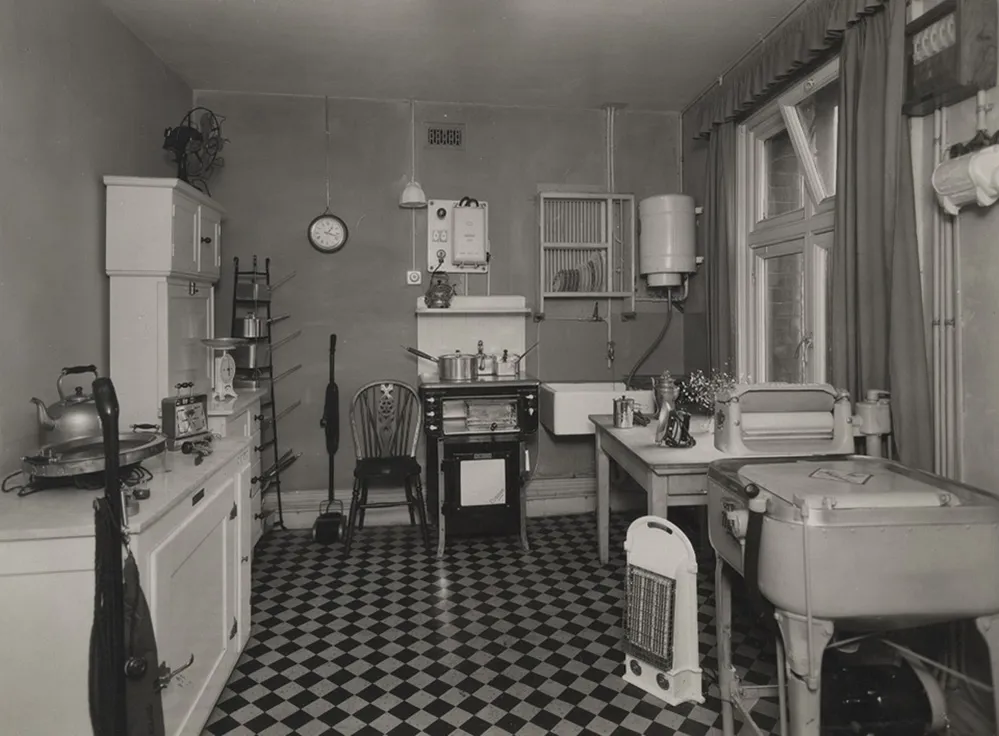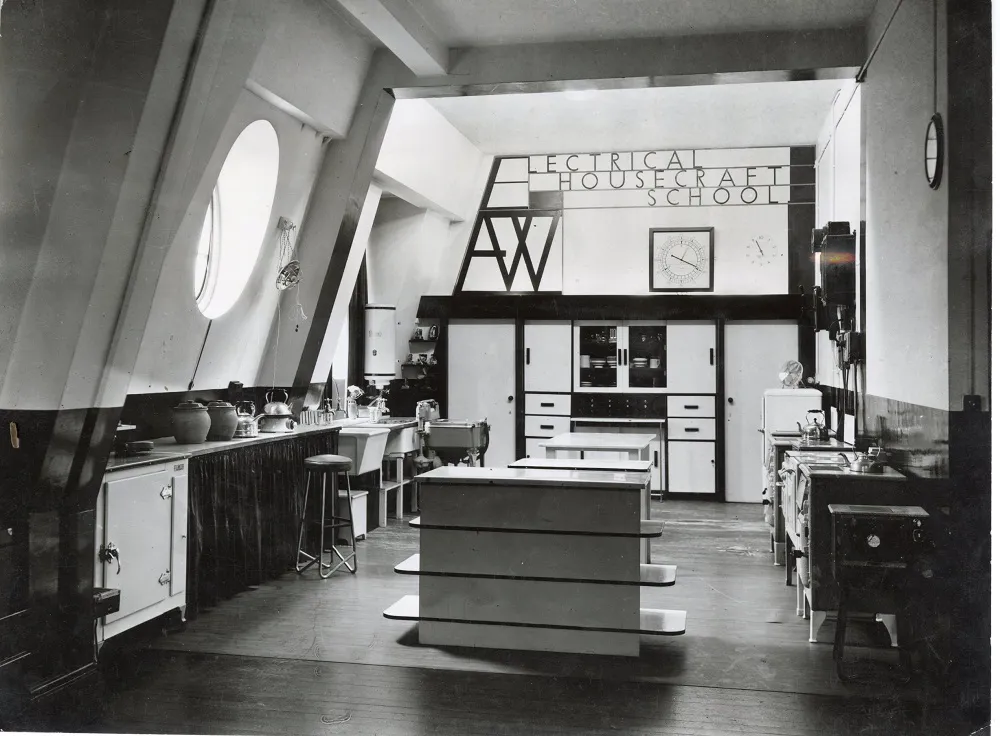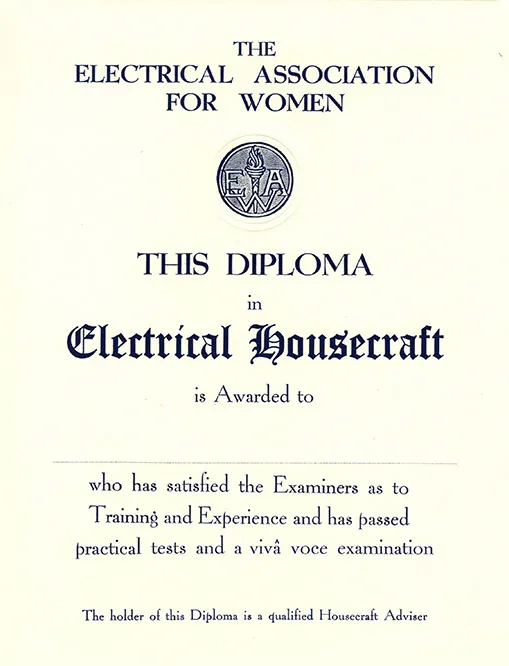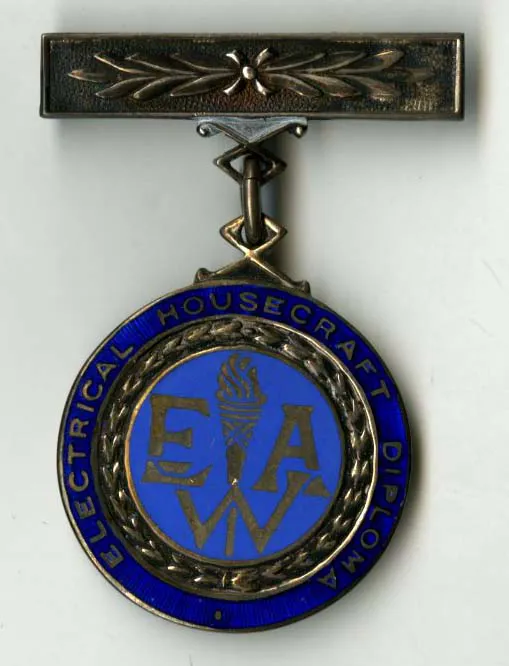The EAW's primary function was to educate women about the domestic use of electricity. Initially, it illustrated the labour-saving use of electrical appliances through a series of demonstrations and lectures. Branch Presidents held demonstrations in their homes and Dame Caroline constantly travelled in Britain and abroad providing advice and inspiration.
Interest quickly spread and as the number of branches grew the EAW, realising that if women's opinions on electrical matters were to carry weight, they needed to be informed established examinations on two levels (diplomas and certificates) for demonstrators and teachers.
These became recognised qualifications.
Continue the story
-
Go to Women and engineering Women and engineering -
Go to History of WES History of WES -
Go to The Woman Engineer journal The Woman Engineer journal -
Go to EAW - history and policy EAW - history and policy -
Go to EAW Centenary EAW Centenary -
Go to Caroline Haslett and WES Caroline Haslett and WES -
Go to WES - WW2 and beyond WES - WW2 and beyond -
Go to The Electrical Age Journal The Electrical Age Journal -
Go to IET Young Woman Engineer Awards IET Young Woman Engineer Awards
A Diploma in Electrical Housecraft was offered at Battersea Polytechnic and in 1933 the Electrical Housecraft School, presenting a model labour-saving kitchen, was opened at the EAW's home in Kensington Court. The school demonstrated various systems of lighting and heating as well as many types of switches, plugs and outlets.

Electrical Association for Women Kensington Court Kitchen 1930s ref. IET Archives NAEST 93/08/23/02.

Electrical Association for Women Housecraft School ref. NAEST 93/08/23/11.
Educating and informing women
Demonstrator's Circles were formed and it was established as a career with status. As the national electricity grid grew, so too did the demand for Demonstrators - the EAW ensured that this demand was met.
An interesting blog has been written about Alyse Tomlinson-Lee, an electricity showroom demonstrator, in the 1920s-1930s. Through her application forms and references, we can gain an insight into a successful woman's career that many may not even know had existed.
In 1926, the EAW published the first edition of its journal, "The Electrical Age" to keep women up to date with relevant developments, without much technical information. It also served to introduce leading women, report on EAW events, provide 'helpful hints for homemakers' and inform about educational opportunities. Board of Education Summer Schools for teachers were begun in 1930.
In 1936, the EAW Home Workers certificate was established, later being replaced by the Electricity for Everyday Living course. The Electrical Handbook, first published in 1934, became a recognised textbook for training purposes and went through many editions and revisions.

Electrical Association for Women Diploma in Electrical Housecraft certificate ref. NAEST 93/04/02/01.

Electrical Association for Women Diploma badge ref. NAEST 93/04/01/03.
Independent living
The Bristol branch successfully built an "All-Electric House" for less than £1000. The project aimed to encourage women to ask that electric equipment should be included in the price of a house and to stimulate a greater interest in general design, construction and wiring. A number of pamphlets and plays described the workings of electrical apparatus and phenomenon of electricity.
In November 1930 an exhibition took place in the New Horticultural Hall, Westminster, London that was titled, ‘The Bachelor Girls Exhibition’. Our blog gives more detail about the Bachelor Girls Exhibition and the all-electric flat organised by the Electrical Association of Women. This demonstration flat, according to the EAW, was the first public expression of a woman’s idea of how the bachelor woman could live electrically.
In 1945, the Women's First Electrical Exhibition was organised to honour the 21st birthday of the EAW and to illustrate the great part played by women and the electrical supply industry in winning the war.
The Caroline Haslett Trust (later the Caroline Haslett Memorial Trust) formed an important part of EAW work. It was launched in 1945 to mark the association's 21st anniversary and to honour its first director. The Trust Fund was set up to provide scholarships in domestic science and to finance travelling exhibitions. The CHMT extends this work by including university scholarships and other educational opportunities to help women seeking careers in the electricity industry.
